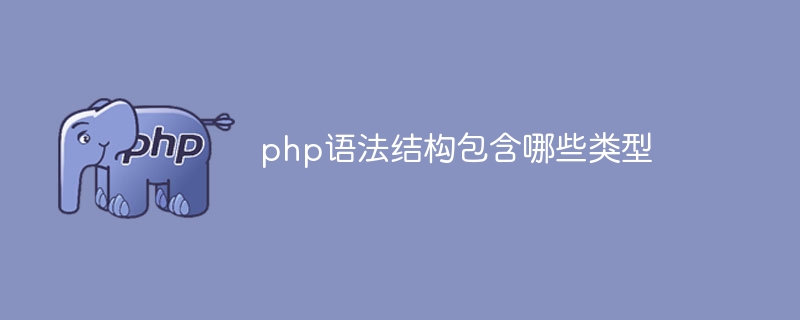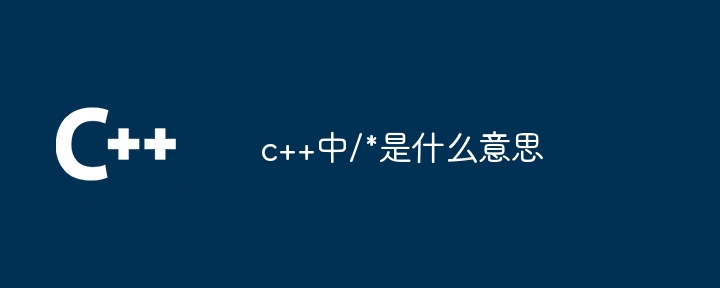Found a total of 10000 related content

How Can I Efficiently Parse String Tokens in C ?
Article Introduction:Efficiently Parsing String Tokens in C To effectively split a string into tokens separated by a specific delimiter, C offers robust mechanisms....
2024-11-14
comment 0
1027
php 清除换行符,清除制表符,去掉注释标记总结
Article Introduction:本文章总结了几种利用php 清除换行符,清除制表符,去掉注释标记实现代码,有需要的朋友可参考本文章。
2016-06-08
comment 0
2152




Explain C tags in C language
Article Introduction:Tokens are generally the smallest, indivisible units in a C program and have different meanings. Types of Tokens The various types of tokens in C are as follows - Identifier - This refers to the name of a function, variable, array, structure, etc. Operators - These symbols tell the C compiler to perform some logical, mathematical, or relational operation. Special Characters - All characters other than letters and numbers are called special characters. Constants - Some fixed values that cannot be changed during runtime of a program execution are called constant items Keywords/Reserved Names - These are predefined words with some special meaning and cannot be used as variable names. Example The following is a C program that uses tokens - #include<stdio.h>intmain(){ &
2023-08-30
comment 0
1305

C++ compilation error: undeclared identifier, how to solve it?
Article Introduction:When programming in C++, we often encounter the problem of undeclared identifiers. This usually occurs when undefined variables, functions, or classes are used, causing the compiler to fail to recognize these identifiers, resulting in compilation errors. This article describes common causes of undeclared identifier problems and how to resolve them. Common Causes Undeclared identifier problems usually arise from the following reasons: Variables, functions, or classes are not declared correctly: You should declare variables, functions, or classes before using them. If the variable is not declared or function
2023-08-22
comment 0
12759

What types does php syntax structure include?
Article Introduction:PHP syntax structure includes tags, comments, variables, data types, operators, control structures, functions, classes and objects. Detailed introduction: 1. Tags. PHP code must be included in specific tags so that the server can recognize and interpret it. PHP tags can be in two forms: short tags and long tags. Short tags are enabled by default in the PHP configuration file. Long tags need to be manually enabled in the PHP configuration file; 2. Comments, text used to explain the code, they will not be executed by the server, there are two types of comments: single-line comments and multi-line comments, etc.
2023-08-31
comment 0
1132

What does /* mean in c++
Article Introduction:In C++, "/" and "/" are multi-line comment symbols used to comment out blocks of code so that they will not be executed by the compiler. Specific usage includes: /* Mark the beginning of the comment. */ Marks the end of the comment. The content of the comment can be multiple lines of text and does not need to end with a semicolon (;).
2024-04-26
comment 0
404

Explain volatile and restrict type qualifiers in C language, with an example
Article Introduction:Type qualifiers add special properties to existing data types in the C programming language. There are three type qualifiers in C language, among which volatile and restricted type qualifiers are explained as follows - VolatileA The volatile type qualifier is used to tell the compiler that variables are shared. That is, if a variable is declared volatile, it can be referenced and changed by other programs (or) entities. For example, volatileintx; restricts this to use with pointers only. It shows that pointers are only the initial way of accessing referenced data. It provides more help for compiler optimization. Sample program The following is a C program for volatile type qualifier - int*ptr&
2023-09-10
comment 0
834

What symbols are used for php language markup?
Article Introduction:The symbols of the PHP language tag are: 1. <?php, the starting tag of the code, used to identify the following code as PHP code; 2. ?>, the end tag of the code, used to identify the end of the PHP code; 3. < ?, short tag, used to identify the following code as PHP code; 4. <?= expression ?>, short output tag, used to directly output the value of the expression; 5. <!--?php and ?--> , long comment tag, used to comment out blocks of code.
2023-08-17
comment 0
2876

golang language symbol meaning
Article Introduction:Golang (also known as Go) is an open source programming language released by Google in 2009. Its design is inspired by the C language, but has made many improvements and innovations, so it has higher efficiency, security and concurrency. When learning Golang language, it is very important to understand the meaning of various symbols. This article will introduce in detail the meaning of common symbols in Golang language. 1. Comment symbols Comment symbols have their uses in any programming language. They are used to explain code, mark code, remind yourself or other developers, etc. Golang supports single-line comments
2023-05-15
comment 0
821


Syntax rules for HTML comment tags
Article Introduction:HTML comment tag syntax and specific code examples HTML comment tag is a special tag used to add comments in HTML code to help developers understand and maintain the code. In this article, we will detail the syntax of HTML comment tags and provide specific code examples. The syntax of the HTML comment tag is as follows: It is the closing tag of the comment. The middle part is the content of the annotation. Comment
2024-02-25
comment 0
750

What are html comments
Article Introduction:HTML comments are a tag in the HTML language, used to add comment content in HTML code. Comments are very important for developers because they provide additional information and explanations, which contribute to the readability of the code. and maintainability. Comments start with "<!--" and end with "-->". Anything between the comment symbols will be ignored by the interpreter and will not be displayed in the browser.
2023-08-01
comment 0
4671

PHP How to remove HTML and PHP tags from string
Article Introduction:This article will explain in detail how PHP removes html and php tags from strings. The editor thinks it is very practical, so I share it with you as a reference. I hope you can gain something after reading this article. Removing HTML and PHP tags from strings Introduction: In data processing, it is often necessary to remove HTML and PHP tags from strings to obtain plain text content or to prevent unnecessary code execution. PHP provides a variety of functions and regular expressions to achieve this goal. Method 1: strip_tags() function The strip_tags() function removes all HTML and PHP tags from the string, including comments and scripts. Its syntax is as follows: stringstrip_ta
2024-03-19
comment 0
426

How to solve C++ syntax error: 'unexpected token'?
Article Introduction:How to solve C++ syntax error: 'unexpectedtoken'? In C++ programming, syntax errors are very common. One of the common errors is 'unexpectedtoken', i.e. unexpected token. This error is usually caused by characters or tokens in the code that do not comply with the grammatical rules. This article will introduce some common 'C++unexpectedtoken' errors and provide solutions. Here are some common 'C++une
2023-08-26
comment 0
3166


















